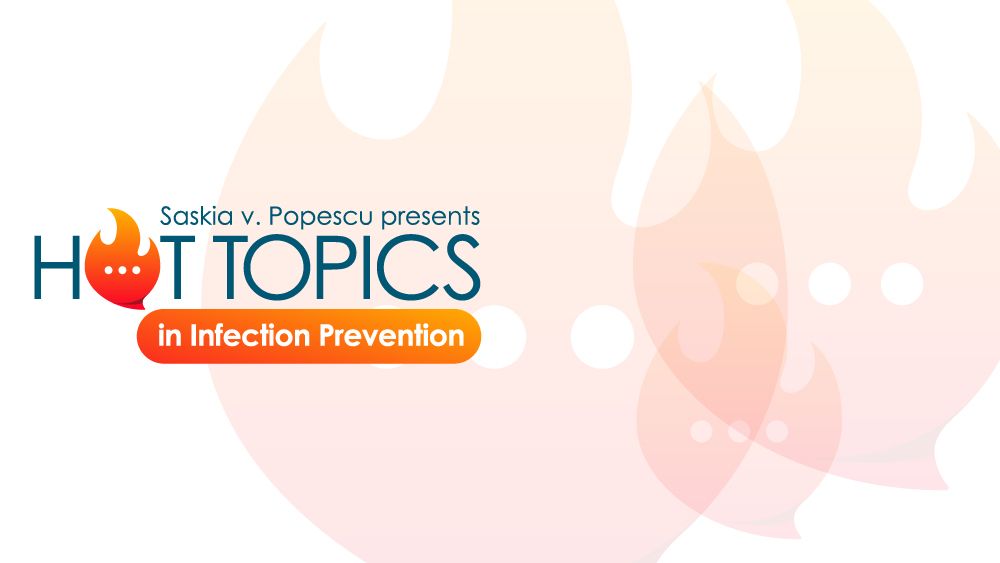Hot Topics in IPC: Congenital Syphilis, Skunks and H5N1, and COVID-19 Mixed News
Saskia v. Popescu, PhD, MPH, MA, CIC, gives updates on congenital syphilis, skunks and H5N1, and COVID-19 on this Ides of March.

Beware the Ides of March?
Did you know Gaius Julius Caesar had epilepsy? The actual cause has been thrown around from a brain tumor to even neurosyphilis, but we will likely never know.
Congenital Syphilis
It may no longer be the days of 44 BCE and the Roman Forum, but syphilis is still causing health ailments. Unfortunately, rates of congenital syphilis are drastically rising in the United States. We often see syphilis rarely, and in terms of congenital, it’s so preventable that when it does occur, it’s quite unexpected. Unfortunately, the United States is struggling to combat infectious diseases. Over the past decade, “there’s been about a 700% increase in the cases of congenital syphilis in the United States,” said Robert McDonald MD, MPH, of the CDC’s Division of STD [sexually transmitted diseases] Prevention, Surveillance and Data Management. “It really is upsetting because this is something that is fully preventable if we have the right screening and treatment,” he said. “It’s out there; people just need to be connected with that.” There are many reasons for this–uneven coverage, access to care, decreasing funding, and health resources rerouted from sexually-transmitted infections (STIs) to COVID-19 response. More and more, though, this highlights the importance of health education, screening of pregnant individuals, and ensuring sustained STI intervention programs.
Skunks and Avian (H5N1) Influenza
Alas, another mammal has stumbled into the world of H5N1, as health officials in British Columbia, Canada, reported the deaths of two skunks who succumbed to avian influenza. Upon more investigation, the British Columbia government reported, “Testing has confirmed 8 skunks found dead in late February in Richmond and Vancouver are positive for avian influenza.” Moreover, they noted that “testing revealed the skunks were infected with the same strain of H5N1 avian influenza that caused the deaths of wildlife and domestic poultry in the province since the April 2022 outbreak began. The skunks may have contracted influenza by scavenging infected wild birds.” The area has seen 20 species of birds impacted, these skunks and a fox. Here’s a helpful resource regarding the more significant implications of H5N1 and its ecological aspects.
COVID-19
We might be seeing an uptick in cases across the globe… Locally, the news is good – the United States isn’t seeing a spike, and cases are down 18% in the last 2 weeks, hovering at 28,000 new cases daily. The part that worries me is: Cases worldwide are up 200%. That’s 452k cases per day. Some countries are seeing major spikes in cases. For example – Ukraine is reporting a 1,228% increase in cases in the last 2 weeks, Libya is up 1,200%, Togo 367%, Iran 152%, etc.
So many of these countries are severely impacted by vaccine inequity that stresses their health infrastructure and capacity to respond. Consider this, Ukraine is reporting that steep increase in cases, and only 34% are considered fully vaccinated. Madagascar is reporting a 700% increase in cases, and only 7% of the population is fully vaccinated.
Why should we worry if cases aren’t increasing in the United States? That might be temporary, and time has shown that SARS-CoV-2, like any virus, mutates when it can spread (hey, a virus is going to virus, eh?), so when we still spread in areas with little vaccination rates and already stressed infrastructures, that can translate to delayed control and surveillance measures. Global health is the key to getting a leg up on COVID-19.
Uncovering a Hidden Risk: Alcohol Use Disorder Significantly Increases C difficile Infection Rates
April 10th 2025A groundbreaking study reveals a strong connection between alcohol use disorder and increased risk for Clostridioides difficile infection, challenging traditional assumptions and calling for enhanced infection prevention protocols.